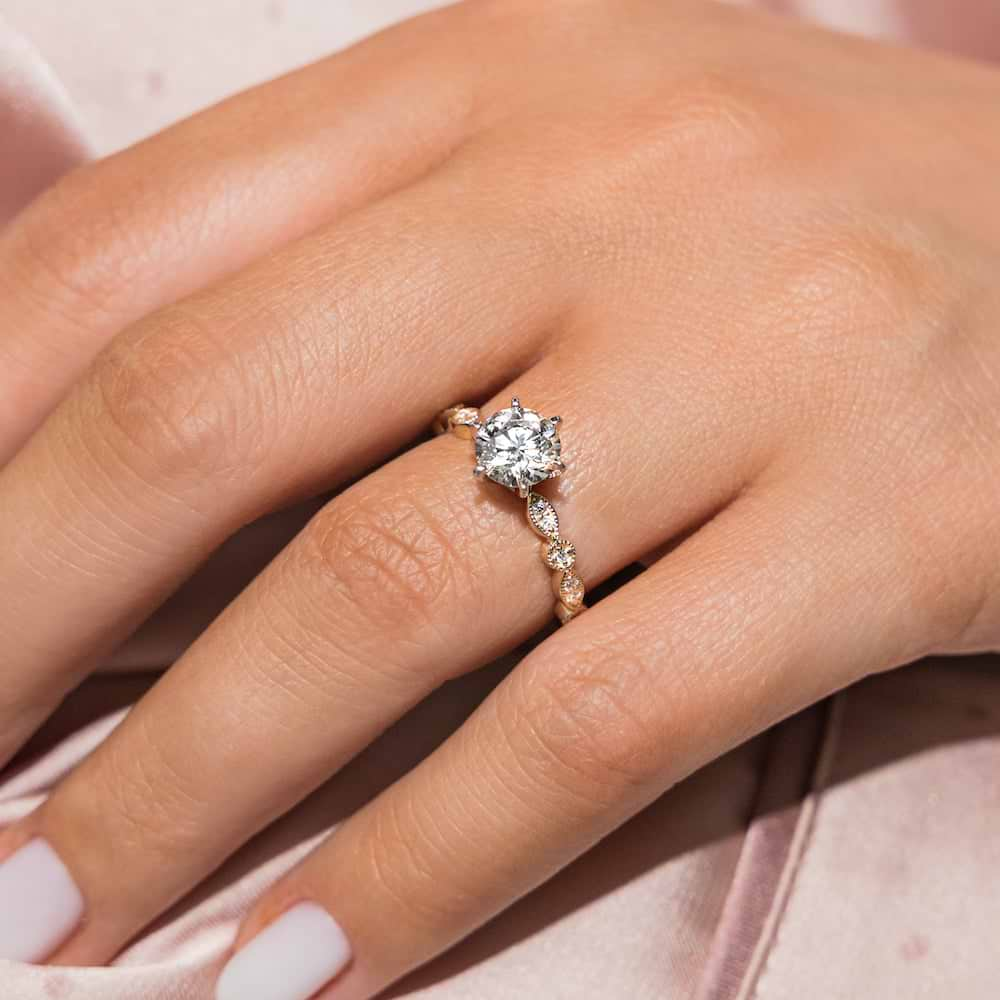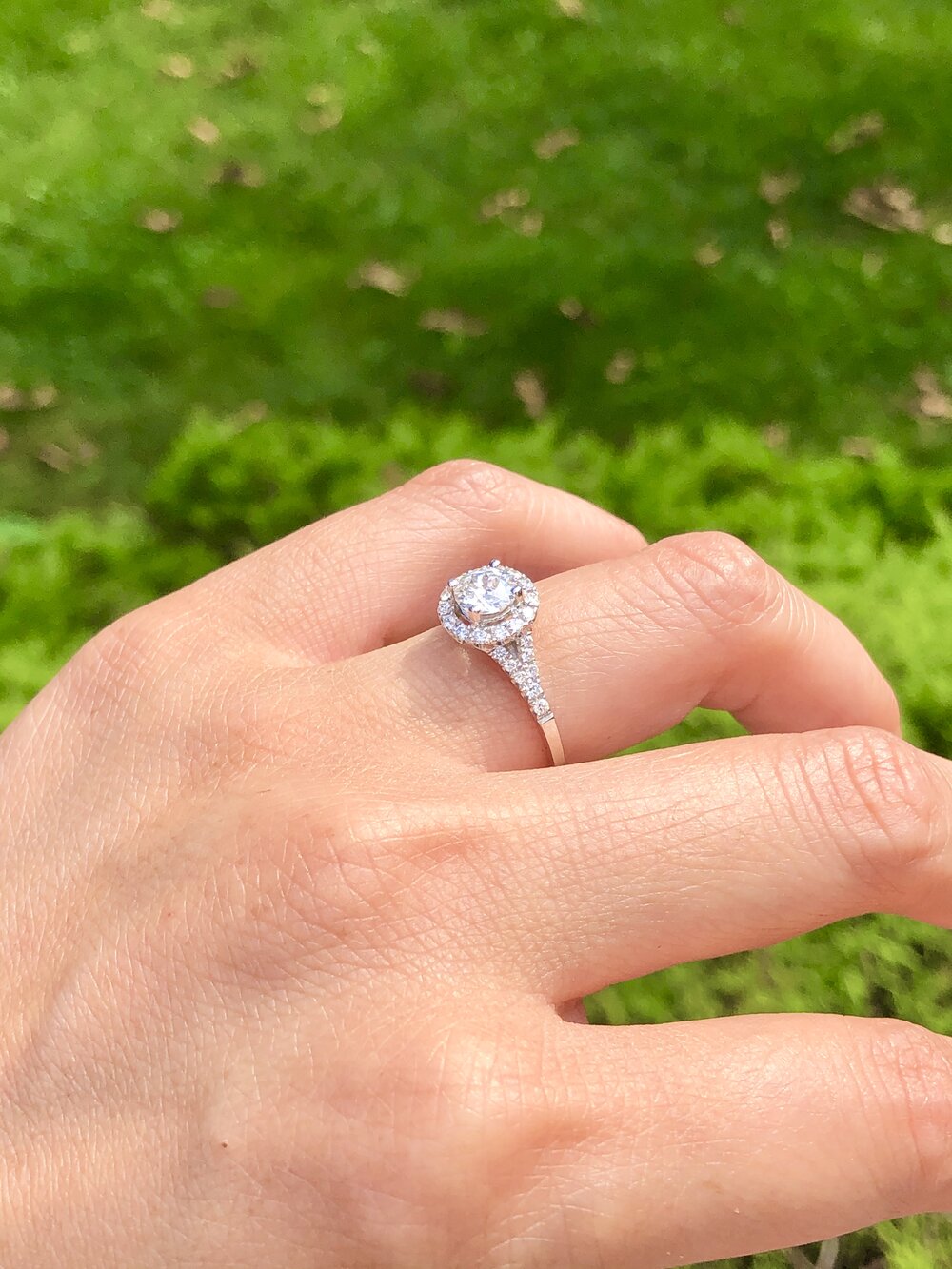Why Laboratory Grown Diamond Engagement Rings Are the Perfect Selection for Eco-Conscious Couples
Lab-grown Diamond involvement rings present an engaging choice for couples that focus on sustainability. These diamonds use a striking choice to traditional extracted rocks, considerably lowering environmental damage. They are produced utilizing innovative methods that ensure both quality and luster. As understanding of ethical sourcing grows, many pairs are reassessing their selections. What implications does this shift have for the future of the Diamond market?

The Ecological Effect of Traditional Diamond Mining
Although Diamond mining has actually long been celebrated for its allure and stature, the ecological effects of typical mining techniques are significantly worrying. The removal of rubies typically involves considerable land disturbance, causing deforestation and habitat loss for countless types. Additionally, the process takes in huge quantities of water, which can deplete neighborhood sources and adversely affect bordering neighborhoods. Toxic chemicals made use of in mining operations can infect close-by water sources, even more threatening both human populaces and wildlife.
Furthermore, the carbon impact related to carrying mined diamonds adds to the total ecological toll. The heavy machinery and equipment needed for mining operations contribute considerably to greenhouse gas emissions. As recognition of these concerns grows, several customers are starting to doubt the sustainability of typical Diamond sourcing. This change in viewpoint highlights the urgent requirement for more eco pleasant options, such as lab-grown diamonds, which assure to decrease the eco-friendly impact while maintaining the appeal and value of Diamond precious jewelry.
The Process of Creating Lab-Grown Diamonds
Lab-grown rubies are created through 2 key methods: High Pressure Heat (HPHT) and Chemical Vapor Deposition (CVD) The HPHT process simulates the all-natural conditions under which rubies develop in the Planet's mantle. It involves subjecting carbon to severe stress and temperature, causing the formation of carbon atoms right into Diamond structures. In contrast, the CVD method enables the development of rubies in a regulated setting. This technique makes use of a gas combination containing carbon, which is energized to develop plasma, making it possible for carbon atoms to deposit onto a substrate and grow layer by layer into Diamond crystals.
Both approaches create rubies that are chemically and literally similar to all-natural diamonds - lab grown diamond engagement rings. The choice of method typically relies on the desired features and size of the final gem. This cutting-edge approach to Diamond development not just provides a lasting choice however also permits higher openness in the sourcing of materials
Quality and Brilliance of Lab-Grown Diamonds
While lots of may presume that lab-grown diamonds differ in top quality from their natural counterparts, they in fact show equivalent radiance and visual allure. Lab-grown diamonds are produced making use of sophisticated technology that replicates the all-natural problems under which rubies form, causing stones that have similar physical and chemical residential properties. These diamonds attain the same extraordinary clearness and color grading as mined diamonds, making them equivalent to the nude eye.
In terms of radiance, lab-grown diamonds commonly present premium light performance as a result of their precision-cut elements. The strenuous quality assurance during manufacturing warranties that these rubies meet high criteria, enhancing their visual attraction. Furthermore, they are offered in a selection of dimensions and forms, permitting couples to find the excellent ring to match their individual style. Eventually, lab-grown diamonds provide a splendid combination of appeal and quality, making them an appealing choice for engagement rings.
Honest Factors To Consider in the Diamond Sector
As consumers end up being progressively knowledgeable about the moral ramifications surrounding Diamond sourcing, the discussion around the Diamond market has moved significantly. Worries about problem rubies, commonly referred to as "blood diamonds," have motivated telephone calls for greater transparency and liability in mining techniques. These diamonds are extracted in battle zone and sold to fund armed dispute, raising severe ethical inquiries for customers. In addition, the environmental impact of typical Diamond mining has come under examination, with concerns such as environment devastation and water air pollution often highlighted.
In action, several have transformed to lab-grown diamonds as a more ethical choice. These stones are developed in regulated atmospheres, getting rid of the threats related to mining. Lab-grown rubies appeal to consumers seeking to make liable choices that line up with their worths. The growing need for honest techniques continues to improve the Diamond sector, pressing for lasting and humane sourcing methods.
Cost-Effectiveness of Lab-Grown Diamonds
Lab-grown diamonds supply an engaging alternative for consumers seeking economical engagement rings - lab grown diamond engagement rings. Valued significantly reduced than their natural counterparts, they give exceptional value for money without compromising high quality or look. This price makes lab-grown rubies an appealing option for budget-conscious pairs
Lower Rate Point
Many couples are finding that going with lab-grown Diamond interaction rings can substantially reduce their total costs without compromising top quality or appeal. These rubies typically cost 30% to 50% less than their extracted counterparts, making them an eye-catching choice for budget-conscious consumers. The price benefit emerges from reduced production costs and a more effective supply chain, which hop over to these guys removes the costs connected with mining. Therefore, couples can buy bigger rocks or even more complex setups, enhancing the general visual of their rings. This price not just enables an extra customized option yet additionally straightens with the values of eco-conscious couples who focus on sustainability while staying financially savvy. Lab-grown rubies offer a best blend of elegance and economic situation.
Worth for Money
The cost-effectiveness of lab-grown rubies extends beyond their first rate, using phenomenal value for money. Unlike natural rubies, lab-grown choices can be up to 40% cheaper while preserving the very same physical and chemical homes. This affordability enables couples to buy bigger or higher-quality rocks without exceeding their budget plans. The resale worth of lab-grown rubies is progressively boosting, making them a much more feasible option for future financial factors to consider. In addition, lab-grown rubies typically feature lower ecological and honest expenses, giving couples with satisfaction. By selecting lab-grown rubies, eco-conscious pairs not only conserve money yet also contribute to lasting practices, improving their overall value suggestion in the jewelry market.

Personalization Options for Lab-Grown Involvement Rings
How can couples guarantee their engagement ring mirrors their distinct romance? Personalization choices for lab-grown Diamond interaction rings provide a suitable service. Pairs can pick try this site from different Diamond forms, including round, princess, or oblong, allowing them to choose a design that resonates with their personal visual.
Furthermore, they can determine on the setting-- be it solitaire, halo, or vintage-inspired-- guaranteeing the ring matches the Diamond's sparkle. Steel selections, such as white gold, yellow gold, or climbed gold, even more improve personalization, satisfying private preferences.
Additionally, pairs can include meaningful engravings, including a sentimental touch that represents their bond. With these considerable modification choices, lab-grown Diamond engagement rings description not only personify a pair's love but also show their worths, making them a perfect option for eco-conscious collaborations. Ultimately, these rings come to be a true depiction of their distinct trip with each other.
Frequently Asked Inquiries
How Do Lab-Grown Diamonds Contrast to All-natural Diamonds in Worth?
Lab-grown diamonds commonly cost 20-40% much less than natural diamonds, offering comparable quality and look. Their reduced cost point makes them an appealing option, particularly for budget-conscious customers looking for honest and sustainable choices in jewelry.

Are Lab-Grown Diamonds More Long Lasting Than All-natural Diamonds?
Lab-grown rubies possess the exact same physical and chemical buildings as natural rubies, consisting of resilience. Both kinds score an ideal 10 on the Mohs range, making certain that lab-grown diamonds are similarly immune to damaging and damages.
Can Lab-Grown Diamonds Be Resold Conveniently?
Lab-grown diamonds can be resold, yet their market demand varies compared to natural rubies. While some customers value their honest beginnings, others might like natural alternatives, potentially impacting resale value and ease of transaction.
What Are the Care Directions for Lab-Grown Diamonds?
Lab-grown diamonds need normal care to maintain their sparkle. Cleansing with light soap and cozy water, utilizing a soft brush, and preventing extreme chemicals will help maintain their sparkle and integrity for many years ahead.
Are There Any Certifications for Lab-Grown Diamonds?
Lab-grown diamonds can be certified by respectable organizations such as the Gemological Institute of America (GIA) and the International Gemological Institute (IGI) These qualifications ensure adherence, credibility, and quality to industry requirements for lab-created gemstones.
Both approaches generate diamonds that are chemically and literally identical to natural rubies. Lab-grown diamonds are developed utilizing sophisticated technology that duplicates the natural problems under which rubies form, resulting in stones that have identical physical and chemical properties. Lab-grown rubies commonly cost 20-40% less than natural diamonds, providing comparable high quality and appearance. Lab-grown diamonds have the very same physical and chemical residential properties as natural rubies, consisting of durability. Lab-grown diamonds can be marketed, but their market need differs contrasted to all-natural rubies.